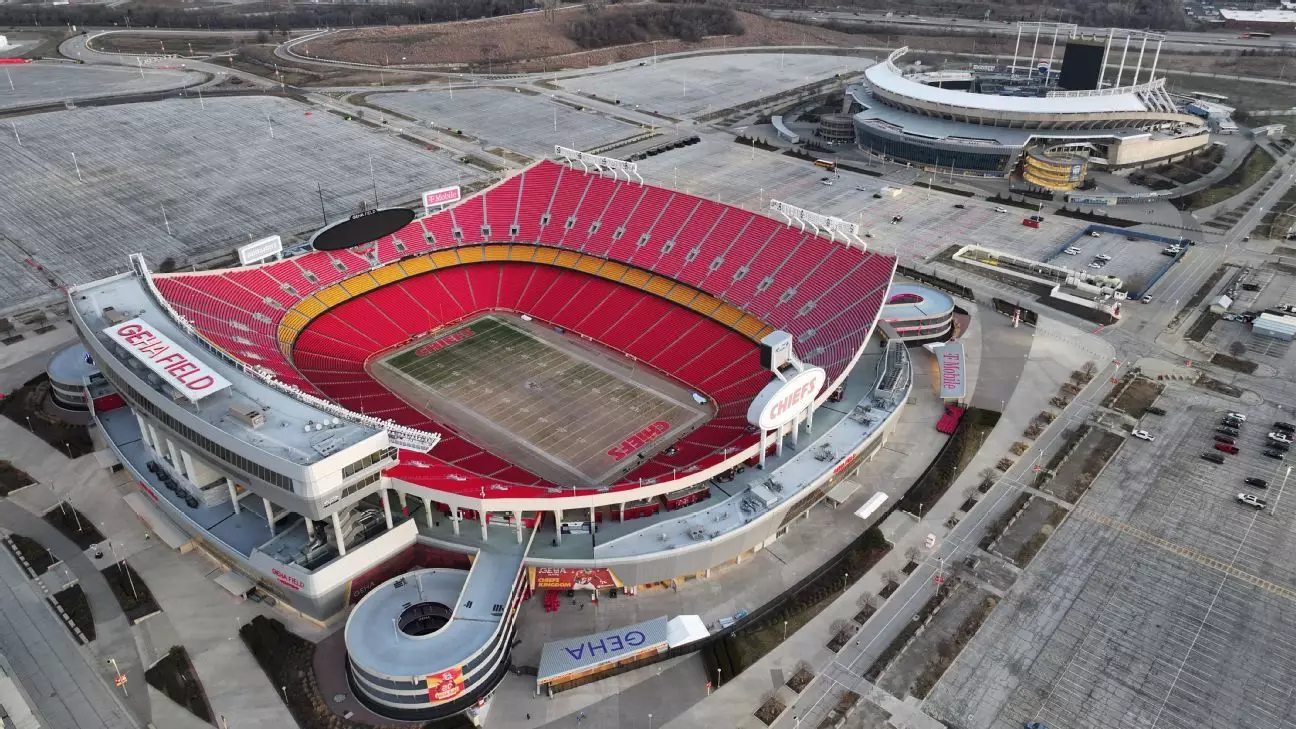Recent developments in Missouri’s Senate reveal a landscape ripe with urgency and complexity. Following catastrophic tornadoes that wreaked havoc on St. Louis, lawmakers have detected an urgent need to balance disaster relief efforts with the immense economic implications tied to two of the state’s beloved sports franchises: the Kansas City Chiefs and Royals. The Missouri legislature has put forth a robust plan exceeding $100 million aimed at recovery from the recent storms, which inflicted an astounding $1.6 billion in damage. This multifaceted approach constitutes not just relief but also an attempt to nail down the future of major league sports within the state, as both teams face a looming deadline to consider offers from a rival state.
Stadium Incentives: A Double-Edged Sword
In a state with pressing financial needs, the allocation of hundreds of millions in stadium incentives poses a contentious dilemma. The Chiefs and Royals presently operate under leases that extend to 2031, yet funding for upgraded venues hangs in the balance. While some argue that the construction of new stadiums represents a powerful form of economic development, critics highlight the detrimental effects this can pose on public finances. According to Patrick Tuohey from the Show-Me Institute, a think tank promoting free-market policies, such public expenditures often enrich billionaire team owners while diminishing essential public services. This juxtaposition raises questions about whether the short-term influx of jobs and activity surrounding new stadium construction genuinely offsets long-term community needs.
Community Impact vs. Corporate Incentives
The legislation under consideration includes proposed tax credits and bonds designed to persuade both teams to remain in Missouri. However, the risks associated with such financial incentives cannot be ignored. Opponents argue that these measures divert taxpayer money from vital services such as education and public safety. The narrative surrounding sports teams is particularly ironic: they often signal unity and community pride while simultaneously infiltrating the political realm with negotiations that serve the interests of the affluent. For many St. Louis residents, who are grappling with the immediate aftermath of devastating storms, the idea of investing in sports obscures the pressing need for disaster recovery.
Moreover, the recent push to funnel resources toward revitalizing sports facilities raises a question of priorities. In the midst of recovery efforts, the state must grapple with whether investing in flashy projects for sports teams stands as a worthy cause when compared to funding recovery for those whose homes have been obliterated. The longstanding debate over public funding for competitive sports persists; advocates for the Chiefs and Royals argue that well-invested funds return dividends that bolster the state’s economy, but many economists ponder the validity of such claims.
The Perils of Competition
What unfolds within Missouri’s legislative arena also serves as a poignant reminder of the cutthroat nature of sports economics. Kansas’s overture to lure the teams amplifies the competitive tension between states, with each vying for the loyalty of athletes who have become symbols of regional pride. The self-sustaining cycle of stadium negotiations pits city against city, which can strain equitable resource distribution and sideline community welfare initiatives.
As Missouri lawmakers scramble to finalize a legislative package that includes disaster aid and stadium investments, it becomes increasingly vital to assess the long-term ramifications of these decisions. The allurement of shiny new venues may simply exacerbate existing economic inequalities, leaving lower-income areas without the support they desperately need. While the horn of economic development resonates with many, the true winners in this game often remain cloistered away, their fortunes burgeoning at the expense of citizens whose lives have been irrevocably changed.
Looking Forward: Balancing Priorities
Transitioning from rhetoric to tangible change will require more than mere legislative action. Public dialogue must engage citizens to assess their values and visions for community recovery alongside their love for local sports. Balancing the needs for immediate disaster relief and the potential long-term benefits of investing in sports infrastructure will be an immense challenge. To navigate this treacherous economic landscape, Missouri must prioritize investments that ensure a brighter future for its constituents and reconsider what community resilience truly looks like.


Leave a Reply